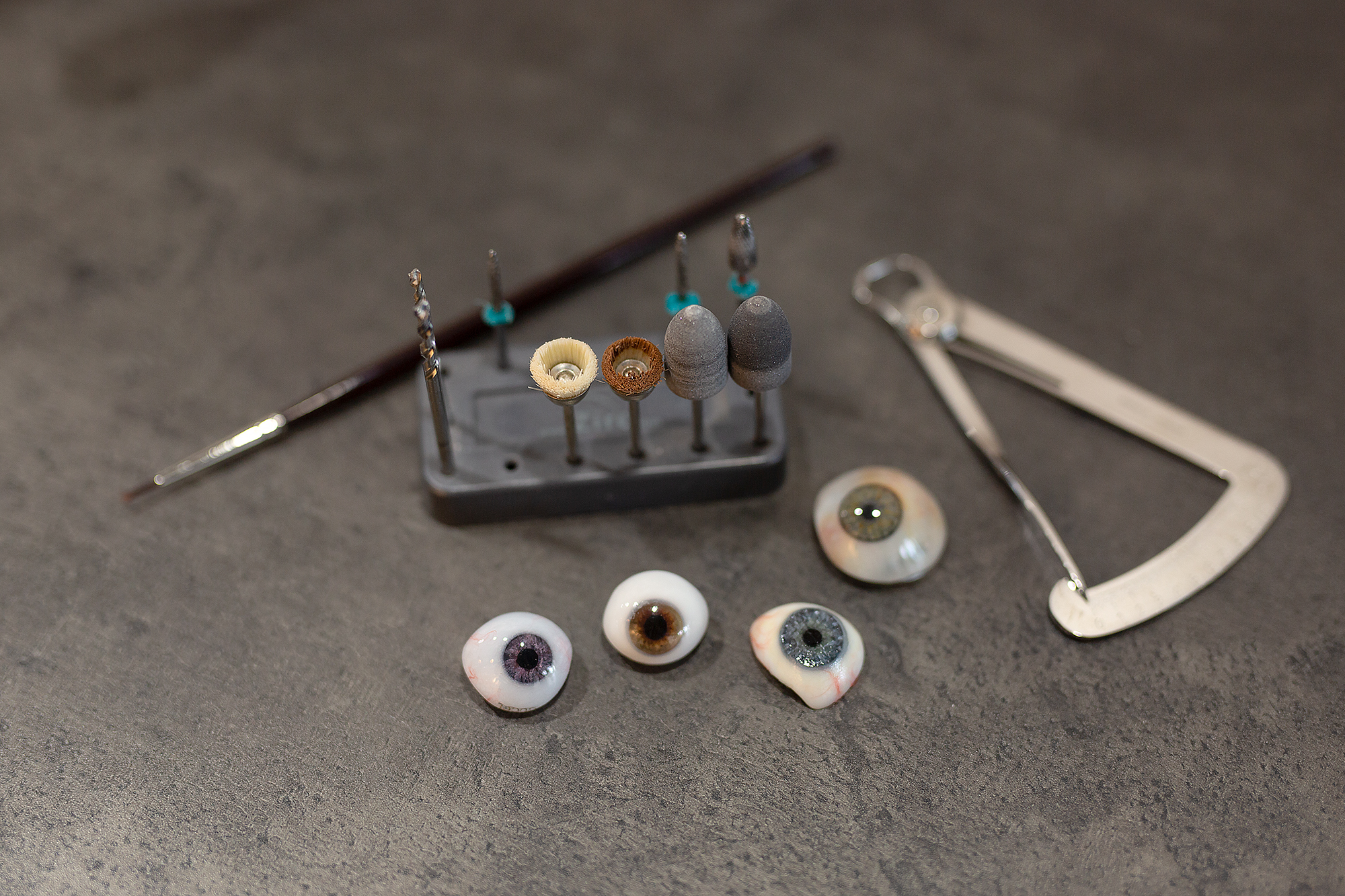I often see clients who have not had a replacement in 10 to 20-plus years. Old shoes fit well until they don’t right! Our bodies change and shift in a five-year cycle, with changes to our faces being what can ultimately cause issues for the socket. The prosthesis itself will last 100-plus years if it is made and maintained well, but what good is a prosthesis if it does not fit correctly?
There are two main indicators that you need a replacement.
- Irritation and discharge
- Potential lax inferior lid or droopy superior lid.
What does this mean?
If you leave a replacement for too long, you have a greater risk of damaging the inferior and superior lids, not to mention the interior part of the socket and exterior of the implant. The last thing we want is an exposed implant. This may lead to a visit to your oculoplastic surgeon for corrective surgery. If the inferior/bottom lids are too lax, you may find the new prosthesis will be hard to retain. This then causes issues with the prosthesis fitting in all the right places but not staying put.
The big issue with these long drawn out replacement intervals is with having a new prosthesis made, you may find you will need a few extra visits to get the prosthesis fitting correctly, and you can probably expect it to take five to seven days to settle in and for the socket to calm down. With the socket being so used to the old prosthesis, it probably won’t be too happy to have a new prosthesis fitting correctly. This is not a big deal as long as you know what to expect and remember to keep your ocularist in the loop. Let them know what is going on if you have any concerns.
Some key points to remember and ask yourself?
What damage am I causing?
Am I maintaining it correctly?
Why am I replacing it?

There are several important reasons why artificial eye replacement is necessary:
- Restoring the Appearance of the Eye: Losing an eye can be traumatic and can cause a person to feel self-conscious or embarrassed. Artificial eye replacement can restore the appearance of the eye and help individuals feel more confident and comfortable in social situations.
- Improving Quality of Life: Artificial eye replacement can also improve your quality of life. It can help you feel more comfortable and less self-conscious, which can lead to a more fulfilling and satisfying life.
- Maintaining Eye Socket Symmetry: When an eye is lost, the surrounding tissue can begin to shrink and change shape over time. Artificial eye replacement can help maintain the shape of the eye socket and prevent further changes.
- Enhancing Eye Movement: Artificial eyes can also be designed to move in a realistic manner, which can help improve the appearance and function of the eye.
Overall, artificial eye replacement can significantly impact the physical and emotional well-being of individuals who have lost an eye.




